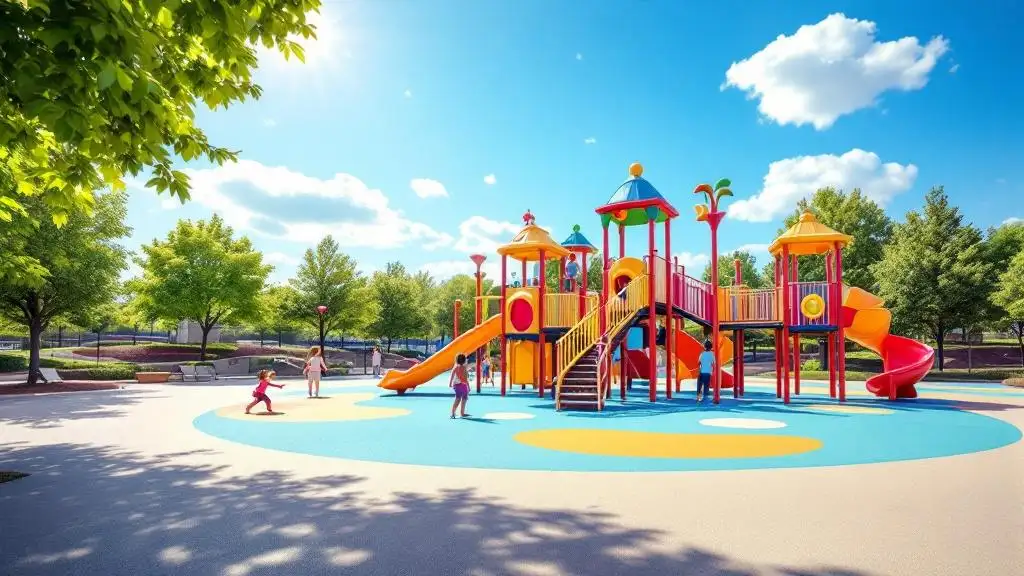
Physical Activity and Autism Therapy
Harnessing Movement to Improve Autism Outcomes
Exploring the Therapeutic Power of Physical Activity in Autism
Physical activity plays a crucial role in enhancing the quality of life for individuals with autism spectrum disorder (ASD). From improving motor skills to fostering social interactions, structured and engaging movement-based interventions are increasingly recognized as valuable adjuncts to traditional therapies. This article reviews the scientific evidence, therapeutic applications, benefits, barriers, and future directions of physical activity in autism therapy.
The Multifaceted Benefits of Physical Activity in Autism
What are the benefits of physical activity for individuals with autism?
Physical activity provides a wide range of advantages for children and adolescents with autism. Research, including meta-analyses of numerous studies, consistently shows that engaging in regular exercise can lead to significant improvements in social, communication, and motor skills.
Participation in activities like horseback riding, martial arts, swimming, and group-based sports can promote social motivation and communication. These activities help enhance social interactions and reduce stereotypical behaviors, which are often challenging for autistic individuals.
Beyond social benefits, physical activity is instrumental in improving motor coordination, strength, endurance, and overall physical health. Common motor delays such as difficulties with balance, catching balls, and motor planning are addressed through targeted exercises. Aquatic exercises, horseback riding, and motor skill training significantly boost muscular strength and balance.
Moreover, physical activity influences brain function positively through neuroplasticity, helping reinforce neural pathways involved in social and motor skills. It also encourages the release of endorphins, which can elevate mood, reduce anxiety, and decrease hyperactivity.
Exercise programs tailored for autism often include strategies like breaking tasks into small steps, incorporating visual supports, and involving family members to foster participation. Regular activity not only improves physical health—helping manage weight and reduce obesity risk—but also enhances behavioral outcomes.
Overall, integrating structured, enjoyable physical activity into autism therapies can improve social skills, cognitive function, and emotional well-being, contributing to a better quality of life.
Empirical Support for Physical Activity Interventions
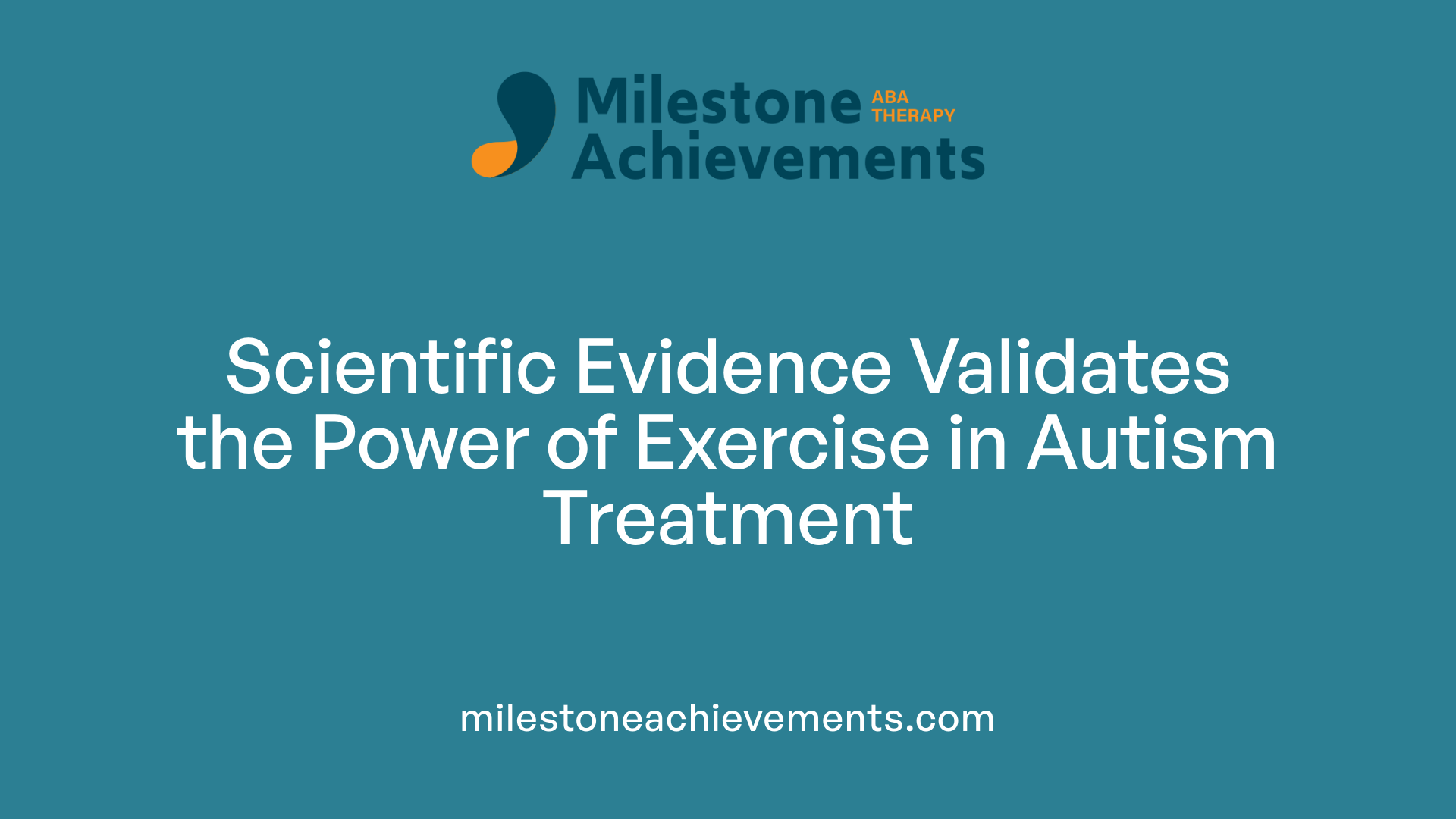
What is the scientific evidence supporting physical activity in autism therapy?
Research robustly supports incorporating physical activity into autism intervention strategies. A comprehensive meta-analysis of 29 studies involving over a thousand young people with autism found that physical activity programs yield moderate to large improvements in various areas.
Specifically, physical activities such as horseback riding, group play, running, and exergaming have been shown to enhance social and communication skills significantly. These activities can help children develop better social understanding and express themselves more effectively.
Numerous studies, including systematic reviews and randomized controlled trials (RCTs), highlight that exercise programs positively influence core autism symptoms. For instance, physical exercise is associated with better motor performance, reduced repetitive behaviors, and improved social functioning.
Brain-related benefits are also documented. Increased levels of brain-derived neurotrophic factor (BDNF), a protein linked to neuroplasticity, suggest that exercise may help promote neural connectivity and adaptive brain changes.
Beyond motor and social improvements, exercise might impact the gut-brain axis by modifying gut microbiota, which is often altered in individuals with ASD. This influence can further alleviate some behavioral symptoms, enhance mood, and reduce anxiety.
It's important to note that the evidence indicates structured, individualized programs are most effective. Implementing early, routine, and engaging physical activities leads to more significant benefits.
While there are some limitations, such as variations in study quality and small sample sizes, the overall trend clearly supports physical activity as a valuable component of autism therapy. As research progresses, integrating these interventions into standard practice holds promise for improving the quality of life for individuals with autism.
Integration of Physical Activity into Autism Interventions

How does physical activity integrate into autism interventions and therapy programs?
Physical activity plays a significant role in autism intervention strategies, aimed at improving core symptoms and overall functioning. Tailored programs are designed to address motor, social, behavioral, and sensory challenges faced by children and adults with autism. Evidence from various studies indicates that incorporating physical activities like martial arts, horseback riding, exergaming, and aquatic exercises helps reduce maladaptive behaviors, improve social skills, and enhance motor coordination.
One notable approach is Physical Exercise Therapy (PET), which combines structured exercise routines with individual needs. A systematic review of 28 randomized controlled trials involving over 1,000 participants found that PET significantly improved motor performance, social functioning, and reduced repetitive behaviors. Similarly, modified programs such as TEACCH integrate physical activities, yielding positive outcomes in reducing ASD symptoms.
Combining physical activity with other therapies, like music or social story interventions, further bolsters therapeutic effects. For example, sports games and outdoor exercises have been shown to promote better social interactions, communication, and group engagement. Incorporating physical activity into therapy also includes practical strategies like breaking skills into small, manageable steps, adjusting rules to suit sensory sensitivities, and making activities enjoyable.
Parental involvement and routine integration are vital for success. Activities like walking to school or family outings help embed physical activity into everyday life. Tailoring activities to individual motor, sensory, and behavioral needs ensures greater participation and benefits.
Overall, integrating physical activity into autism treatments provides moderate to significant improvements across multiple domains. It supports motor skills development, reduces behavioral problems, and enhances social and communication abilities, contributing to a better quality of life for individuals with autism.
Overcoming Barriers to Physical Activity Participation
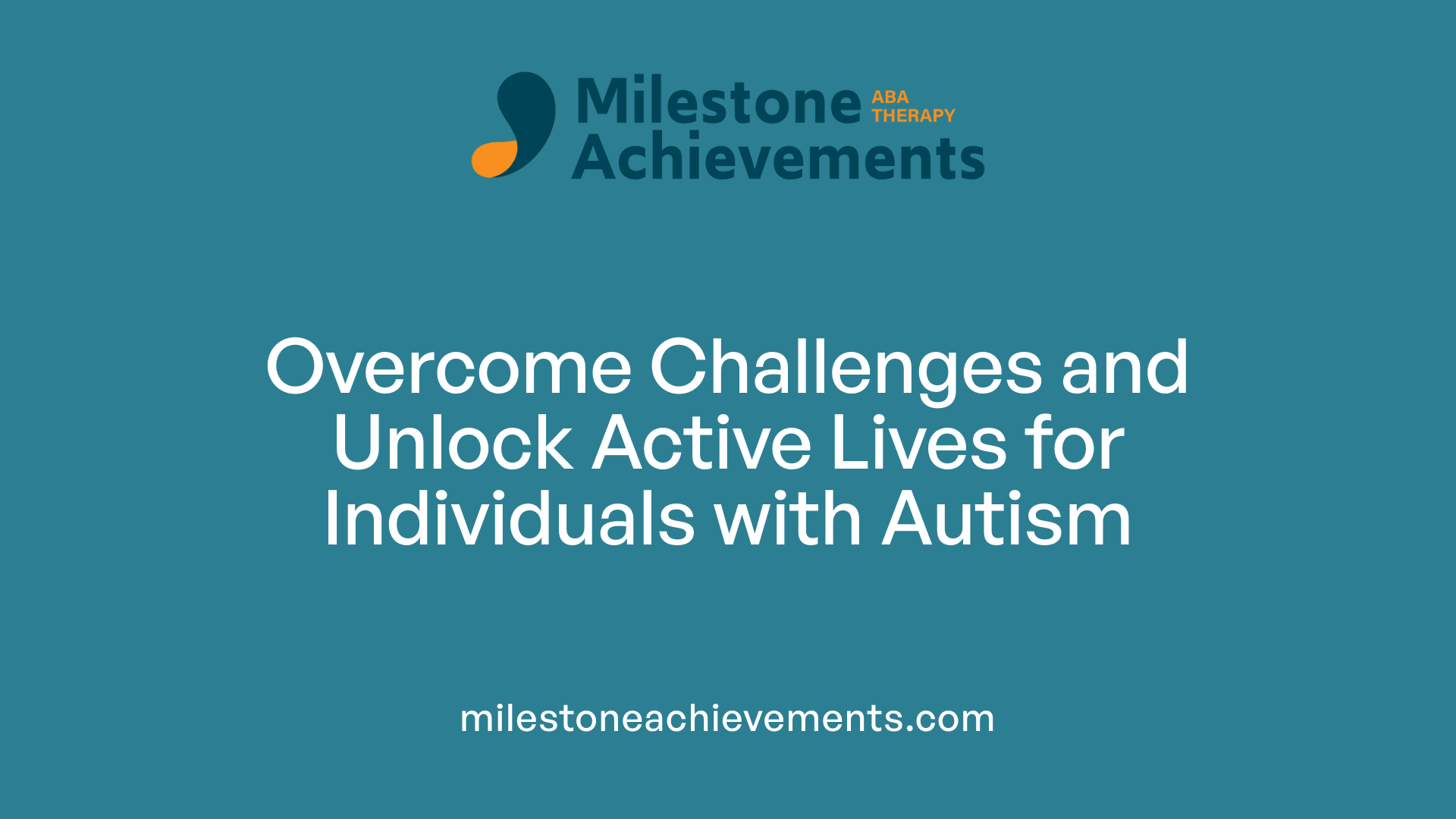
What challenges and barriers do individuals with autism face in participating in physical activity?
Children and adults with autism often encounter significant obstacles that make engaging in physical activities challenging. One major issue is sensory sensitivities. Many autistic individuals experience heightened or diminished responses to sensory stimuli such as bright lights, loud noises, or certain textures. This sensitivity can lead to sensory overload in crowded or noisy environments like gyms or sports fields, discouraging participation.
Motor delays and coordination problems are also common. Studies show that a large percentage of children with autism have difficulties with balance, body coordination, and motor planning. These issues can make simple movements like catching a ball or running feel frustrating or unsafe. For example, children with autism typically score lower on tests related to balance and catching, hinting at underlying challenges with motor skills.
Social and behavioral differences further complicate participation. Autism is characterized by social communication challenges, making it harder to understand social cues or follow game rules. This can lead to feelings of exclusion or being misunderstood during group activities. Additionally, social exclusion and bullying are prevalent concerns, often deterring children from joining sports and group exercises.
Environmental factors may also limit access. Safety concerns, like the risk of wandering or injury, can restrict involvement in outdoor or physical activities. Moreover, traditional sports settings may not be autism-friendly due to unpredictable rules, sensory overload, or lack of accommodations.
Psychosocial barriers also exist. Limited motivation, low self-esteem related to body image, and insufficient support from family or community reduce opportunities for active engagement. As a result, many autistic individuals have lower levels of physical activity, increasing risks for sedentary-related health issues like obesity.
Recognizing these challenges is crucial. Tailored interventions that address sensory sensitivities, improve motor skills, promote social inclusion, and create supportive environments are necessary. Proper training, inclusive policies, and adaptive programs can help remove barriers, encouraging a more active and healthier lifestyle for individuals with autism.
Physical Activity During Autism Therapy Sessions
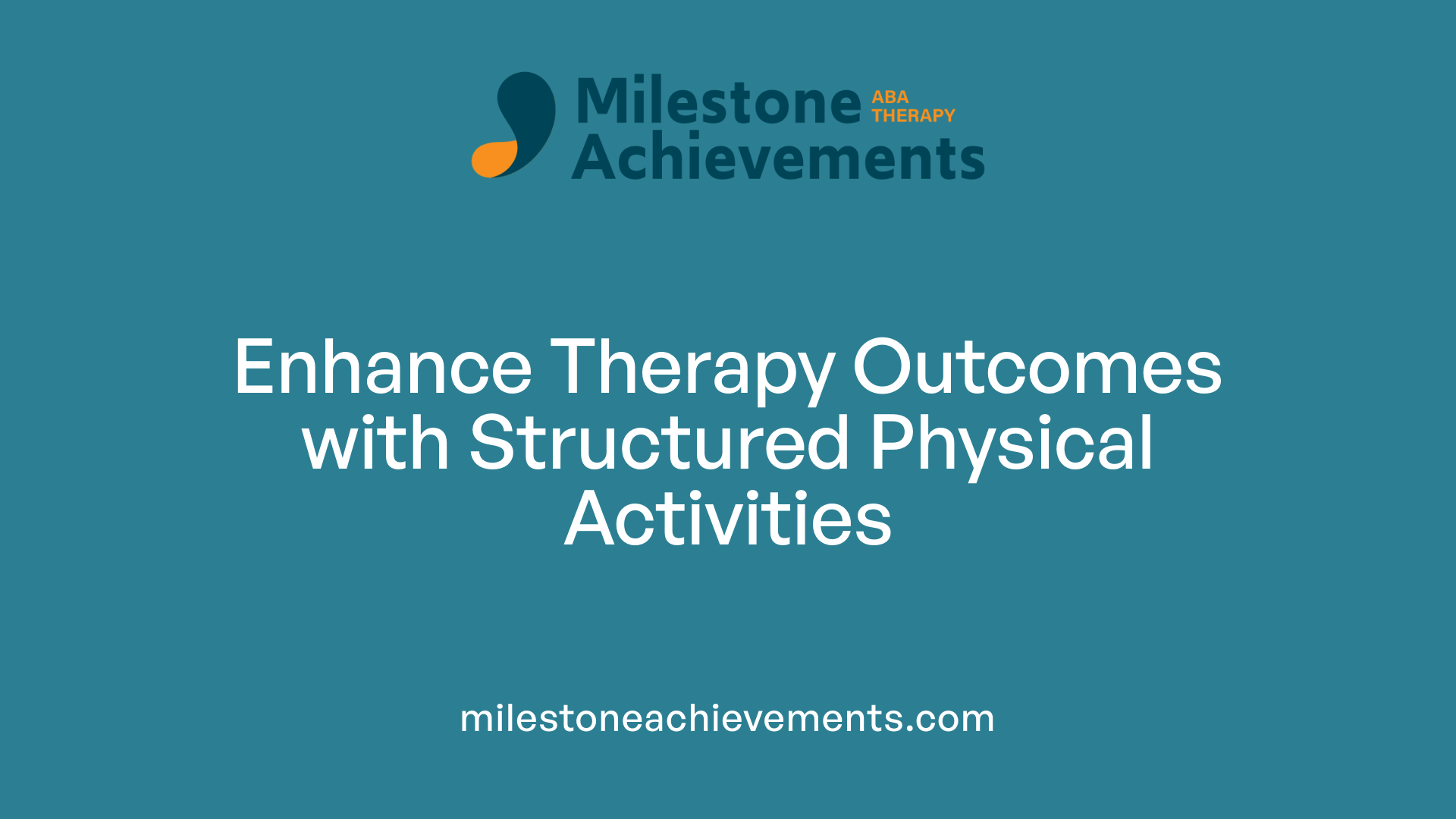
How does physical activity influence sociability, communication, and behavior during autism therapy?
Engaging children with autism in physical activities during therapy sessions has demonstrated substantial benefits for their social, communication, and behavioral development. Structured physical exercises such as group games, martial arts like Karate, and interactive activities like exergaming or sports promote social interaction by encouraging children to cooperate, take turns, and respond to social cues.
Research shows that participation in these activities can lead to improvements in eye contact, response to greetings, and overall engagement with peers and caregivers. Many programs incorporate visual supports and routine reinforcement, making activities more accessible and reinforcing positive behaviors.
Quantitative data from meta-analyses highlight moderate to large effects—indicating significant gains—in social skills and communication abilities. Parent and caregiver feedback consistently underscores the positive impact of physical activity on self-control, cooperation, and emotional regulation.
Incorporating physical activity into therapy complements other intervention strategies, fostering an environment where social functioning is naturally encouraged. As a result, these activities not only support immediate behavioral goals but also promote broader social inclusion and capacity-building for children with autism.
Long-term Benefits and Future Directions
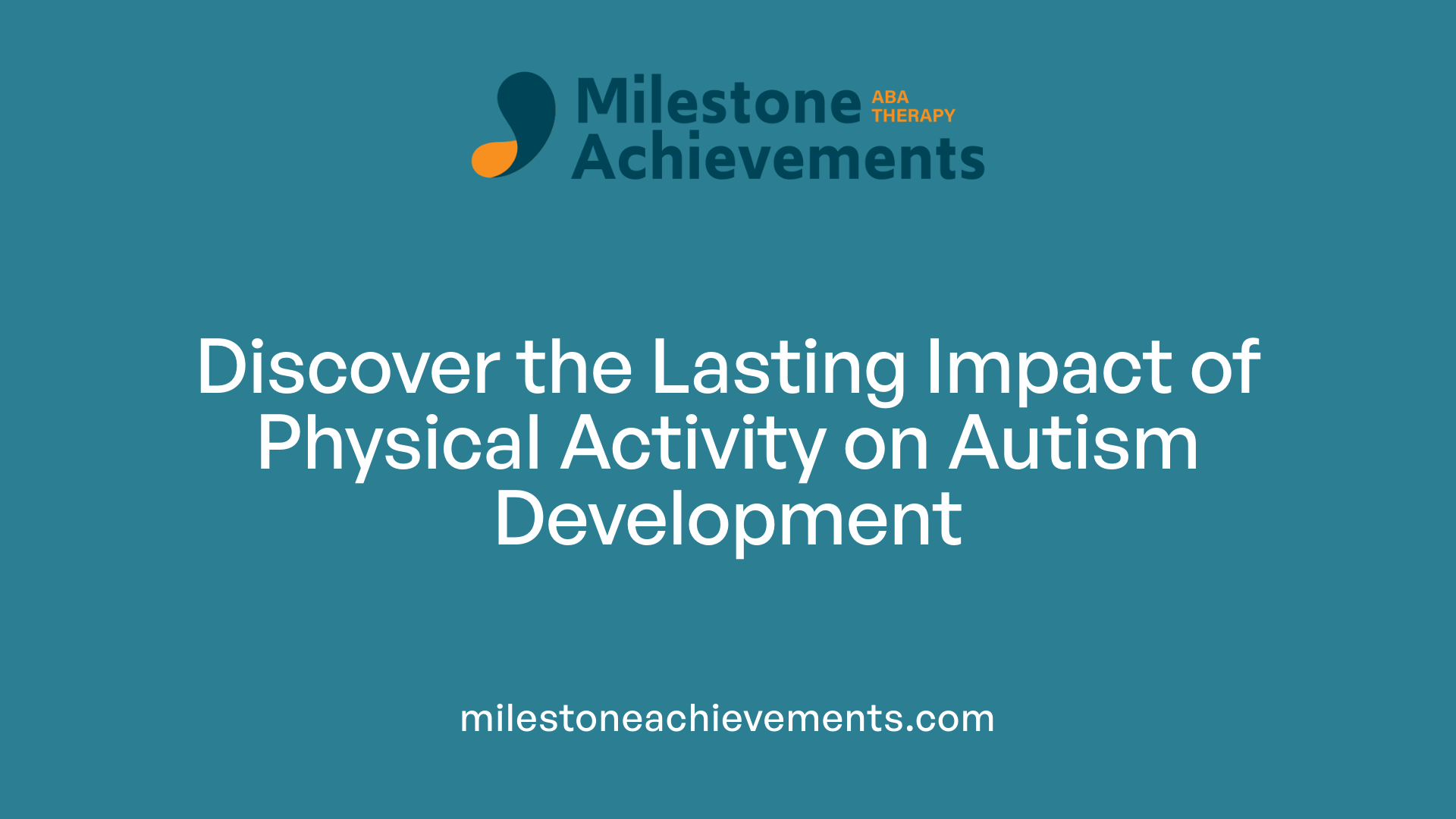
What is the impact of physical activity on sociability, communication, and behavior during autism therapy?
Physical activity has demonstrated significant positive effects on social and communication skills as well as behavioral outcomes in children with autism spectrum disorder (ASD). Research shows that structured physical activity programs—such as martial arts, group exercises, and interactive sports—can enhance social interaction by encouraging cooperation, turn-taking, and social awareness.
These activities help improve communication skills, including eye contact, response to greetings, and expressive language. Additionally, more self-regulation and reduced problematic behaviors are observed when children engage regularly in physical activity. Incorporating visual supports, routine, reinforcement strategies, and involvement of familiar individuals like family and friends makes these programs more effective.
Quantitative analyses report moderate to large improvements post-intervention, with parents noting noticeable gains in social engagement and behavior regulation. Overall, physical activity acts as a valuable supplement to conventional therapies, contributing to broader therapeutic goals and fostering essential social skills.
Sustained improvements in social and motor skills
Long-term participation in physical activity can lead to ongoing improvements in motor skills, such as balance, coordination, and strength, which are often delayed in children with autism. Consistent exercise not only enhances physical abilities but also promotes greater confidence and independence in daily activities.
Research indicates that children who engage in regular, structured physical activities tend to sustain better social interactions over time, with some studies reporting continued benefits months or even years after initial intervention.
Physical activity and mental health
Regular physical activity is associated with improved mood, reduced anxiety, and enhanced overall mental well-being in individuals with autism. Exercise stimulates the release of endorphins and can help manage comorbid conditions such as depression or hyperactivity. Importantly, engaging in enjoyable activities can also foster a sense of achievement and joy, contributing to better quality of life.
Implementing community-based programs
To maximize long-term benefits, integrating physical activity into community settings such as schools, recreation centers, and local clubs is vital. Community programs that are inclusive, adaptable, and sensory-friendly can help sustain participation and foster social connectedness.
Effective programs often incorporate parent and caregiver involvement, providing guidance and support for home-based activities. Training staff to understand ASD-specific needs, offering visual supports, and creating a welcoming environment are essential for encouraging consistent participation.
Research gaps and next steps
Despite promising findings, several gaps persist. The majority of studies involve small sample sizes and varied intervention protocols, making it difficult to generalize results. Many studies also suffer from potential bias, emphasizing the need for more high-quality, randomized controlled trials.
Future research should focus on identifying the most effective types and durations of physical activity, understanding individual differences in responsiveness, and establishing standardized guidelines. Exploring the long-term impact of community-based programs and the role of technology, like virtual reality or mobile apps, can also open new avenues for promoting sustained physical activity among individuals with autism.
Harnessing Movement for Lasting Change in Autism
As research continues to underscore the significant benefits of physical activity, it becomes clear that movement-based therapies hold a promising role in comprehensive autism treatment. By overcoming barriers and tailoring programs to individual needs, caregivers and professionals can harness the therapeutic potential of physical activity to foster social development, improve motor skills, and enhance overall well-being. Future efforts should focus on integrating physical activity seamlessly into regular therapy routines, expanding community-based programs, and exploring innovative interventions to support lifelong health and social success for individuals with autism.
References
- Autism and exercise: Special benefits
- The effect of physical exercise therapy on autism spectrum disorder ...
- Beneficial Use and Potential Effectiveness of Physical Activity in ...
- The Challenge of Physical Fitness for People With Autism
- Assessing Physical Activity Patterns of Children with Autism ...
- Benefits of exercise for children and adolescents with autism ...
- Kids with Autism: 5 Important Exercises - Healthline
- Comparative effectiveness of physical exercise interventions on ...


Partner with us on your child's journey
Milestone Achievements offers evidence-based ABA therapy to help children with autism reach their full potential. Together we’ll set meaningful goals and celebrate progress every step of the way.
Start ABA Services Today


